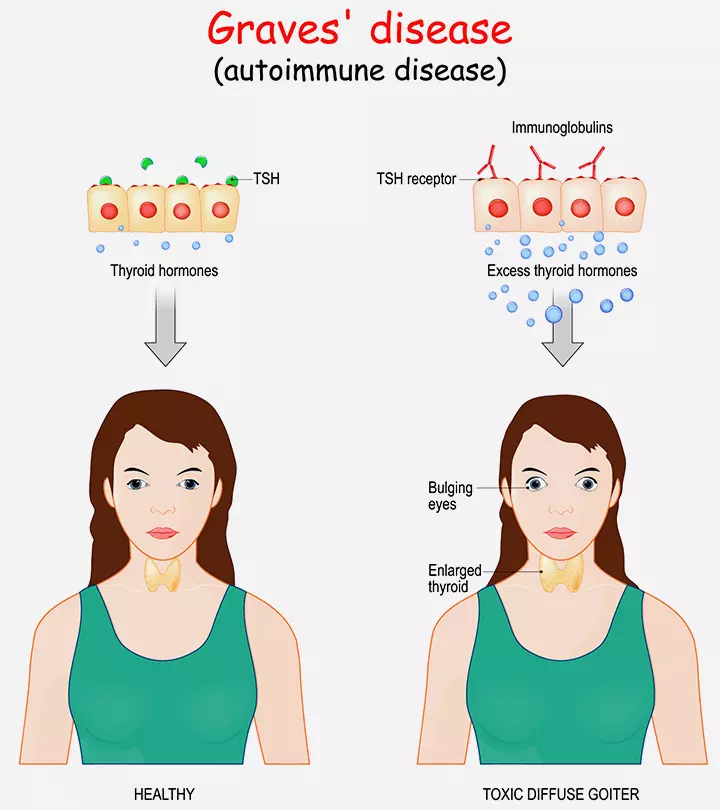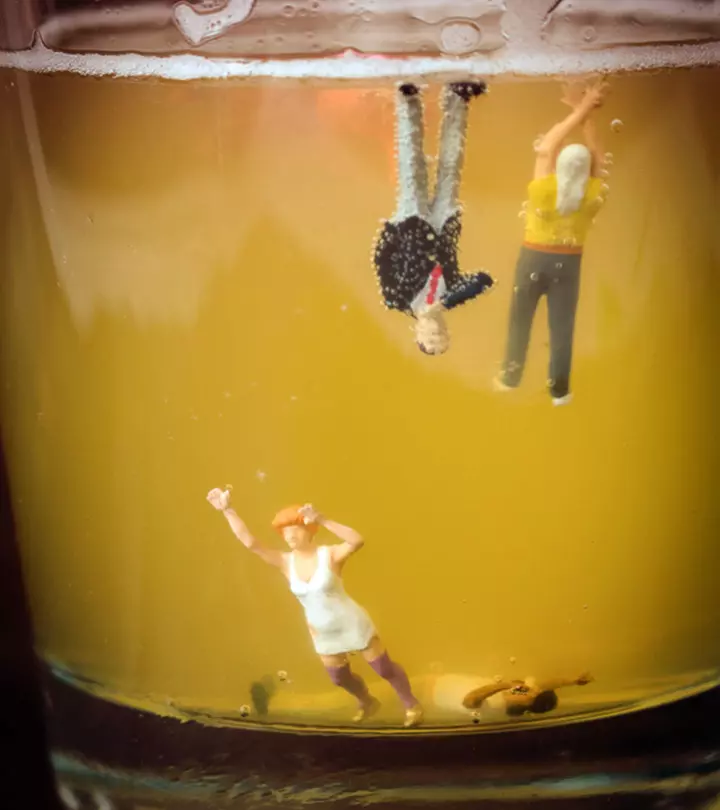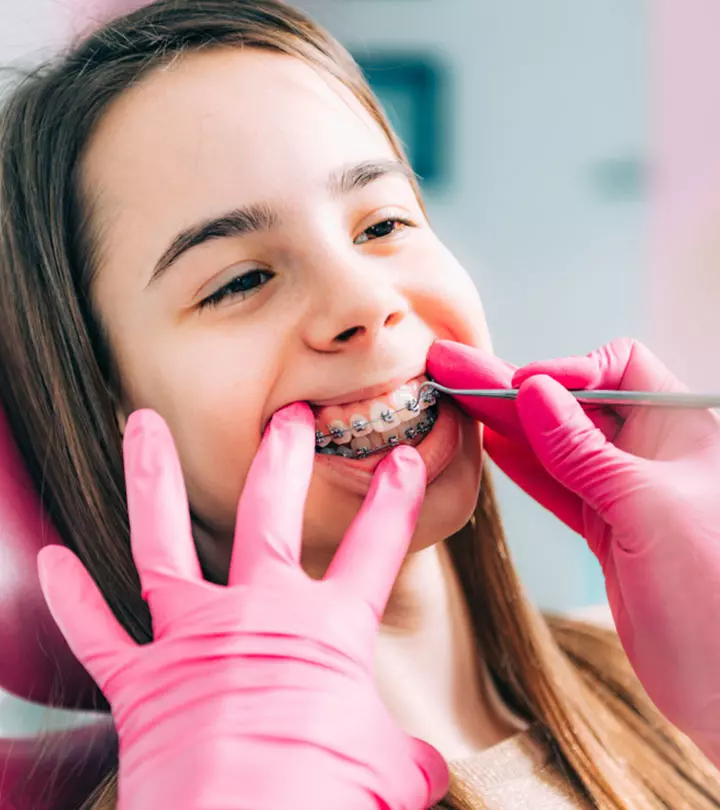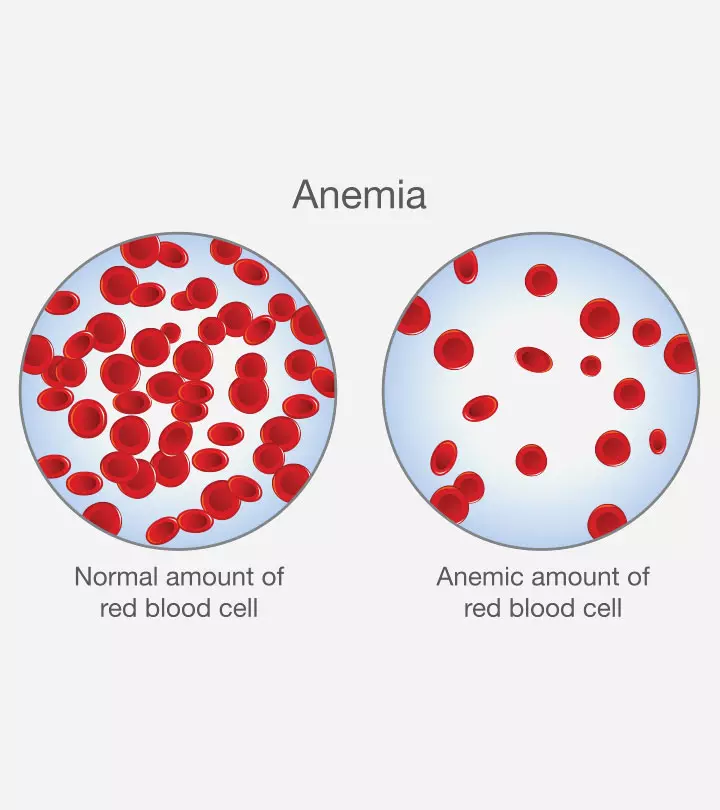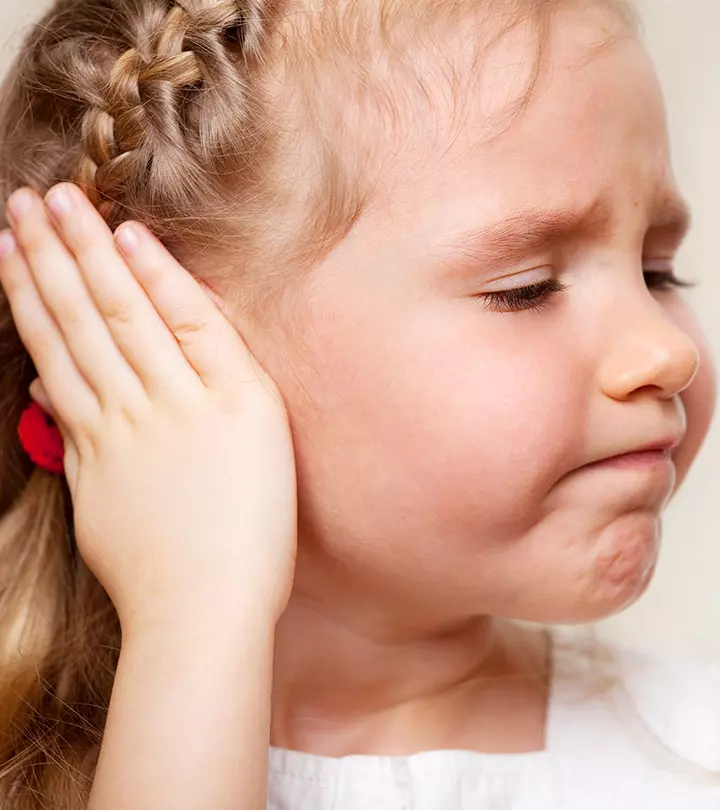
Image: Midjourney/ MomJunction Design Team
Lightheadedness and black spots in the vision can be symptoms of low pressure in teens. Periodic drop in blood pressure or low blood pressure in otherwise healthy teens is not a cause of concern. Some may get hypotension while changing body positions, such as standing or sitting from a lying position. However, it is recommended that frequent hypotension in teens be evaluated since it can be due to underlying conditions (1). Read on to know the causes, symptoms, treatment, and preventive measures for hypotension in teens and when to seek medical care for fainting spells.

Key Pointers
- Hypotension is indicated by blood pressure measurements that are lower than normal.
- Factors that might cause low blood pressure in teens include malnutrition, dehydration, and some medications.
- Symptoms of hypotension include fatigue, confusion, and dizziness.
- Hypotension can be diagnosed through blood pressure readings and physical examinations.
- Treatment for low blood pressure includes consuming a healthy diet, avoiding certain medications, and staying hydrated.
What Is Low Blood Pressure In Teens?
Low blood pressure happens when the blood pressure (BP) levels are less than normal. The normal blood pressure for a teenager is around 110/70mmHg (2). (BP is measured in millimeters of mercury denoted as mmHg and features two numbers: one that indicates the upper value (systolic) followed by the lower (diastolic) value.
In children aged ten years or less, blood pressure lower than 90/50mmHg is defined as low blood pressure or hypotension (3).
Low blood pressure can be categorized into the following types, the symptoms of which can range from mild to severe.
- Neurally mediated hypotension (NMH): It occurs when the child stands for a long time or encounters an upsetting or scary situation. It causes dizziness. However, children usually outgrow NMH (4).
- Orthostatic hypotension: (Also known as postural hypotension): It occurs while standing up suddenly from a sitting or lying position. It happens when the body is unable to adjust to the sudden change in the blood flow. However, the blood pressure will be back to normal after a few seconds (5). There could be many reasons for this occurrence, including autonomic nervous system dysfunction. According to the data from the American Academy of Pediatrics (AAP), about 40% of people faint at some point in their lives, and half of these cases occur during adolescence, mostly at the age of 15 (5).
- Severe hypotension: It can develop due to severe infections, allergic reactions, severe blood loss due to an injury, or a circulatory shock. Severe hypotension can cause complications by preventing the blood from reaching the brain, thus making it a life-threatening condition. In such cases, immediate medical attention is necessary (6).
If left untreated, low blood pressure can lead to serious complications such as fainting, injuries from falls, and in severe cases, shock, which can be life-threatening.
What Are The Symptoms Of Low Blood Pressure In Teenagers?

Most symptoms of hypotension may be recurrent but don’t usually last for a long time. Watch out for the following symptoms, and consult a doctor if they persist (6):
- Blurred vision or black out
- Light-headedness
- Confusion
- Dizziness
- Fainting
- Feeling weak
- Nausea or vomiting
- Sleepiness
There could be various reasons for low blood pressure in teens.
Sharing her sudden fainting episode, Lucy, a 15-year-old high school freshman says, “I was recently diagnosed with postural hypotension, which is a fancy term for low blood pressure. Basically I have an unusually low blood pressure and when I stand still for extended periods of time, it drops significantly. I am prone to fainting and lightheadedness. So that’s how I got a concussion. Fainting. In the shower. While shaving my legs. I was told to spend a week recuperating. No screens, no sports, no reading. In short, anything that required concentration or gave me headaches or made me dizzy (i).”
What Causes Low Blood Pressure In Teens?
A drop in the blood pressure level could be due to several factors (7) (8) (9) (10). Underlying health issues or the lifestyle can be a reason common causes include :
- Low intake of salts and fluids
- Emotional stress
- Standing in an upright posture for a long time and in a warm environment like a hot bath
- Severe iron deficiency anemia
- Drinking alcohol (teenagers)
- Prolonged bed rest (orthostatic hypotension)
Dr. Madalina Petrescu, a cardiologist from Seattle, Washington, says, “Stress can play a significant role in the teenage years. Therefore, teens should engage in relaxing and de-stressing techniques, such as exercise, going out in nature, journaling, coloring, and meditation. If the emotional stress is significant, I recommend seeing a therapist to share and express feelings. Not expressing or talking out emotions can increase the overall risk of more stress.”
If your child’s doctor diagnoses hypotension due to the factors mentioned above, then it may be addressed with certain lifestyle changes.
However, there are a few uncommon causes for hypotension in children, which might indicate an underlying medical condition. These may include (11):
- Hypovolemia (low blood volume in the body) due to excess use of diureticsiAlso known as water pills, they help remove salt and water from the body , vasodilatorsiDrugs that allow blood arteries to expand, impacting the muscles that line the arteries and veins limiting tightness of the walls )
- Addison’s disease (a condition where adrenal glands do not produce enough hormones)
- Diabetes
- Sudden loss of blood
- Severe infection
- Allergies in children (anaphylaxis)
- Septic shockiA life-threatening condition occurring due to severe bacterial infection, causing dangerously low blood pressure.
- Heart diseases, such as heart failure, bradycardia, and changes in heart rhythm
 Quick fact
Quick factLow Blood Pressure In A Teenage Girl
Sometimes, teenage girls tend to have hypotension and episodes of unconsciousness during menstruation. This could be triggered due to pain or heavy bleeding during menstruation, or due to vasovagal syncope.
Vasovagal syncope (VVS) is a reflex disorder that leads to transient loss of consciousness. This is characterized by symptoms, such as acute visual disturbance, auditory disturbance, cognitive slowing, followed by hypotension with lightheadedness and loss of consciousness. However, studies found that the severity of lightheadedness changes during the menstrual cycle and was found to be similar in both VVS patients and healthy individuals.
Also, VVS patients were not found to have any greater risk of gynecological abnormalities and pregnancy complications when compared to otherwise healthy individuals (12).
A few changes in lifestyle, such as taking adequate fluids and salts plus moderate exercise, can help manage this condition. However, if your teenager is having frequent episodes of lightheadedness during her periods, then it is best to schedule an appointment with a gynecologist.
Recalling a real-life case from her practice, pediatrician Dr. Supriya Wakchaure says, “A 14-year-old girl was referred to me after repeated complaints of dizziness and fatigue at school. It turned out she had developed iron deficiency anaemia due to irregular eating habits and heavy periods. After correcting her iron levels and adjusting her nutrition, her blood pressure normalized and her energy returned, Observe the symptoms to know if everything is alright with the child. The next section talks about diagnostic methods for low blood pressure in children.
When To See A Doctor
You may consult a healthcare provider if your teen experiences low blood pressure leading to the following (13) (14):
- Frequent episodes of passing out, disrupting their daily routine
- Fever above 101°F
- Presence of black or maroon stools
- Unconsciousness or fainting spells resulting in injuries
- Chest pain, shortness of breath, or irregular heartbeat
- Symptoms of shock, such as profuse sweating or cold spells
- Blue tint around the lips and fingernails
These signs may indicate significant distress and require prompt medical attention.
How Is It Diagnosed?

The doctor will begin the diagnosis by checking the teen’s medical and family health history. This is followed by a physical examination and a few tests, including cardiac examinations.
- Auscultation method: It is the preferred method for checking blood pressure, wherein the sound from the heart is heard using a stethoscope. It requires a cuff that fits the child’s upper arm (15).
- Blood tests: If anemia is suspected to be the reason for low blood pressure in the child, then a blood test like hemoglobin is done. Low blood sugar could also cause hypotension, which can be evaluated through the blood test.
- Electrocardiography: It is a standard health screening tool used for evaluating the cardiovascular health of children and adolescents. The high or low pulse rate (or heart rate) and the rhythm are evaluated through this diagnostic approach, which is typically used in the diagnosis of syncope that benign NMH can cause (16).
- Tilt table test: If a child complains of dizziness for unknown reasons, then this test is done. During the test, the child has to lie on a table that tilts from a horizontal to a vertical or upright position. The doctor checks the child’s reaction when the table is tilted, to diagnose orthostatic hypotension (17) (18).
Based on the diagnosis, your doctor will suggest the appropriate treatment for hypotension.
Treatment For Low Blood Pressure
Low blood pressure is associated with mild symptoms and rarely requires any treatment. If hypotension is due to the medication that your child has been taking for any other health problem, then the doctor may change the medication, lower its dosage, or advise to stop using it.
If your child is diagnosed with NMH, then the doctor suggests changes to their lifestyle and advises you to provide adequate fluids, salt, and nutritional foods. If that doesn’t work, then medication is recommended. Pediatric patients with NMH rarely might be given drugs like beta-blockersiDrugs that lower blood pressure, also known as beta-adrenergic blocking compounds and fludrocortisoneiA type of steroid used to regulate the quantity of salt and water in the body . However, these both have shown mixed results in pediatric patients, hence caution is needed (16).
How To Prevent Low Blood Pressure In Teenagers?

If your teen often has low blood pressure, lifestyle changes and dietary changes are the best ways to manage the condition. If the child has mild symptoms of low blood pressure, then minor changes in the lifestyle might be enough to prevent any problems. Here are a few measures you may consider (6) (14) (19):
- Avoid dehydration – encourage them to take a lot of fluids, i.e. 2-3 liters per day.
- Have them drink water before getting out of bed.
- Do gentle exercises, preferably seated or horizontal exercises.
- Encourage them to maintain their optimal wealth- not too much or underweight.
- Use adequate salt in the diet.
- Make them eat a balanced diet to provide all the essential nutrients to the body.
 Quick fact
Quick fact- Tell them to avoid standing up suddenly from a sitting position.
- Ask them to avoid standing too long as well.
- Let them eat smaller meals at regular intervals and cut down on the intake of carbohydrates.
- Ask them to wear compression stockings or socksiSpecialized stockings and socks that put light pressure on the legs and feet to improve blood pressure and not let the blood collected in the legs. .
- If they have light-headedness or dizziness, let them lie down for a few minutes, with both feet at a higher level than the body.
- Sitting down and putting the head between the knees will help get the blood pressure back to normal.
- Ask your teen to take their medication continually if prescribed by the doctor.
- Some medications may also cause low pressure in teens. Speak to a doctor for dose adjustment or alternatives.
- Make sure your teen observes good habits, such as staying away from alcohol and tobacco.
A proper diet, along with the above tips, can help manage low blood pressure better.
 Research finds
Research findsDiet For Low Blood Pressure In Teens
Sometimes, blood pressure drops due to the poor supply of essential nutrients in the body. A balanced diet can help replenish these nutrients and elevate the blood pressure level. These dietary changes can also help manage your teen’s low blood pressure (14).
- Include vitamin B12-rich foods such as eggs and fortified cereals as they help prevent anemia. Eat egg in boiled or scrambled form.
- Include vitamin B12-rich foods such as eggs and fortified cereals as they help prevent anemia (11). Eat egg in boiled or scrambled form.
- Foods such as asparagus and broccoli, which are rich in folic acid, also help keep anemia at bay (20).
- Teenage girls should take iron-rich foods like green leafy vegetables, beans, and lentils to compensate for the blood loss during menstruation.
Frequently Asked Questions
1. Does low blood pressure mean dehydration in teens?
Low blood pressure does not mean dehydration. Dehydration in teens is one of the prominent reasons for the occurrence of low blood pressure (24).
2. What neurological disorders cause low blood pressure in teens?
Possible neurological conditions that can cause low blood pressure in teens include (25):
- Orthostatic hypotension is a feeling of dizziness or lightheadedness when a person stands up suddenly. This is caused due to the decrease in the blood supply to the brain.
- Postprandial hypotension is the drop in blood pressure after a meal caused by the changes in the pressure when digesting food.
Afferent baroreflex failure is an instability in the blood pressure due to damage to the nerves that sense the blood pressure. - Familial dysautonomia is a rare inherited condition that causes the blood pressure to fluctuate between too high and too low.
3. How often should a doctor check teens’ blood pressure?
The frequency of blood pressure checks for teens can vary based on individual health, risk factors, and any underlying medical conditions. However, experts generally advise routine screening of children and teens for blood pressure once a year beginning at three years of age (26).
4. Are there any long-term risks associated with low blood pressure in teens?
While an occasional drop in teen blood pressure is usually not a cause for concern, chronic and significantly low blood pressure can induce symptoms such as dizziness, fainting, fatigue, and weakness. It can also reduce physical activity and cause stress and anxiety (14).
5. How can teens monitor their own blood pressure levels at home?
Teens can use a home blood pressure monitor to self-monitor their blood pressure. Follow the manufacturer’s instructions, ensure proper position, and maintain a record for sharing with doctors for proper evaluation (27).
6. How does low blood pressure affect the body and its organs?
When blood pressure falls too low, essential organs may not receive enough oxygen and nutrients, leading to shock. Shock requires prompt medical attention and exhibits symptoms such as chilly and sweaty skin, fast breathing, blue skin, or an irregular and rapid pulse (21).
Low blood pressure in teens can occur due to poor lifestyle choices or other underlying medical conditions. In teenage girls, heavy menstrual flow can also lead to low blood pressure. Low blood pressure in teens rarely needs medical attention if there is no major underlying condition. Lifestyle changes, a better diet, physical activities, and medications when needed will help you manage low blood pressure in your teen. Keep monitoring your teen’s blood pressure and if you notice any sudden changes or unusual symptoms, report it to their healthcare provider.
Infographic: What To Do If A Teen Faints Due To Hypotension?
Fainting or syncope is common when the blood pressure is low. It can be said as a nervous system response after sensing low blood pressure in the blood vessels. Go through the infographic to know what to do when a teen faints due to hypotension.
Some thing wrong with infographic shortcode. please verify shortcode syntax
Illustration: Low Blood Pressure In Teens: Symptoms Treatment And Diet Plan
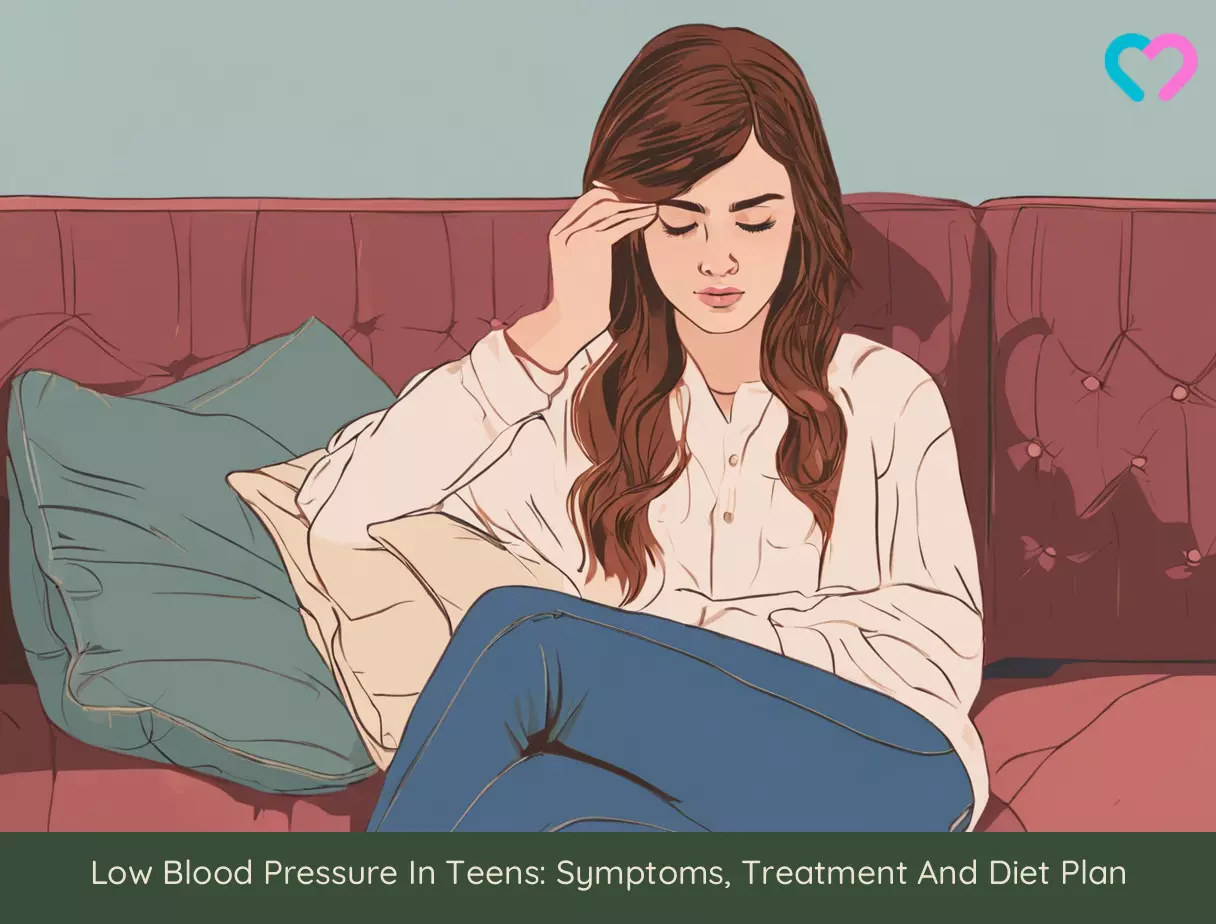
Image: Stable Diffusion/MomJunction Design Team
Learn how to raise low blood pressure quickly and naturally! Discover simple tips to help you increase your blood pressure and feel better fast.
Personal Experience: Source
MomJunction articles include first-hand experiences to provide you with better insights through real-life narratives. Here are the sources of personal accounts referenced in this article.
i. Concussion: Teens, Screens and Mac & Cheese (with Lucy Shribman);https://medium.com/@bill_shribman/concussion-teens-screens-and-mac-cheese-8c33cf6361dc
References
- V.K Van Wijen, et al.; (2016); Initial orthostatic hypotension in teenagers and young adults; NCBI
- High Blood Pressure in Children and Adolescents; Stanford Children’s Health
- Ashish Banker, et al.; (2016); Blood pressure percentile charts to identify high or low blood pressure in children; NCBI
- Munir Zaqqa and Ali Massumi; (2000); Neurally Mediated Syncope; NCBI
- Julian M. Stewart, et al.; (2018); Pediatric Disorders of Orthostatic Intolerance; Pediatric Publications
- Low blood pressure; Medline Plus; US National Library of Medicine
- Patient Information Brochure on Neurally Mediated Hypotension and Its Treatment; New Jersey ME/CFS Association, INC
- Jelena Roganović and Ksenija Starinac; (2016); Iron Deficiency Anemia in Children; Intechopen
- Sara Tasnim, et al.; Effect of alcohol on blood pressure; NCBI
- Orthostatic Hypotension; Disorder Directory Child Neurology Foundation
- Low Blood Pressure – When Blood Pressure Is Too Low; American Heart Association
- Prasuna Muppa, et al.; (2013); Gynecological and Menstrual Disorders in Women with Vasovagal Syncope; NCBI
- Low blood pressure; Mount Sinai
- Low Blood Pressure(Hypotension); Cleveland Clinic
- Gbenga Ogedegbe and Thomas Pickering; (2010); Principles and techniques of blood pressure measurement; NCBI
- Jeffrey B. Anderson M, et al.; The Evaluation and Management of Pediatric Syncope; Pediatric Neurology
- Tilt-Table Test; American Heart Association, Inc
- Jeffrey B. Lanier et al.; (2011); Evaluation and Management of Orthostatic Hypotension; American Academy of Family Physicians
- Living with low blood pressure: Advice for living with low blood pressure; PoTS UK
- Folate; National Institute of Health
- Low Blood Pressure; National Institute of Health
- Jane R Mort and Heather R Kruse; (2016); Timing of Blood Pressure Measurement Related to Caffeine Consumption; Sage Journals
- Harri Niinikoski et al.; (2009); Blood Pressure Is Lower in Children and Adolescents With a Low-Saturated-Fat Diet Since Infancy; American Heart Association
- Low Blood Pressure (Hypotension) in Children; Nicklaus Children’s Hospital
- Types of Autonomic Disorders; NYU Langone Health
- Riley, Margaret et al.; (2018); High Blood Pressure in Children and Adolescents; National Library of Medicine.
- Blood Pressure Monitoring at Home; American Academy of Family Physicians.
Community Experiences
Join the conversation and become a part of our nurturing community! Share your stories, experiences, and insights to connect with fellow parents.
Read full bio of Dr. Shashidhar A

Dr. Supriya Wakchaure is a renowned pediatrician and neonatologist from Surat, Gujarat, India. She has worked at top medical colleges and government hospitals, including KEM Hospital, Mumbai and Civil Hospital, Surat. She has presented various research papers. Dr. Wakchaure is the founder of several mother-support groups. Her services include growth and development evaluation management, allergy testing, tonsillitis treatment, congenital disorders evaluation and treatment, among others.
Dr. Supriya Wakchaure is a renowned pediatrician and neonatologist from Surat, Gujarat, India. She has worked at top medical colleges and government hospitals, including KEM Hospital, Mumbai and Civil Hospital, Surat. She has presented various research papers. Dr. Wakchaure is the founder of several mother-support groups. Her services include growth and development evaluation management, allergy testing, tonsillitis treatment, congenital disorders evaluation and treatment, among others.
- Dr. Madalina Petrescu is a cardiologist with 18 years of experience in structural heart disease, echocardiography and transesophageal echocardiography. She works at Swedish Medical Center and is also the director at a echocardiography laboratory.
 Dr. Madalina Petrescu is a cardiologist with 18 years of experience in structural heart disease, echocardiography and transesophageal echocardiography. She works at Swedish Medical Center and is also the director at a echocardiography laboratory.
Dr. Madalina Petrescu is a cardiologist with 18 years of experience in structural heart disease, echocardiography and transesophageal echocardiography. She works at Swedish Medical Center and is also the director at a echocardiography laboratory.
Read full bio of Dr Bisny T. Joseph
Read full bio of Swati Patwal
Read full bio of Anindita Ghatak






